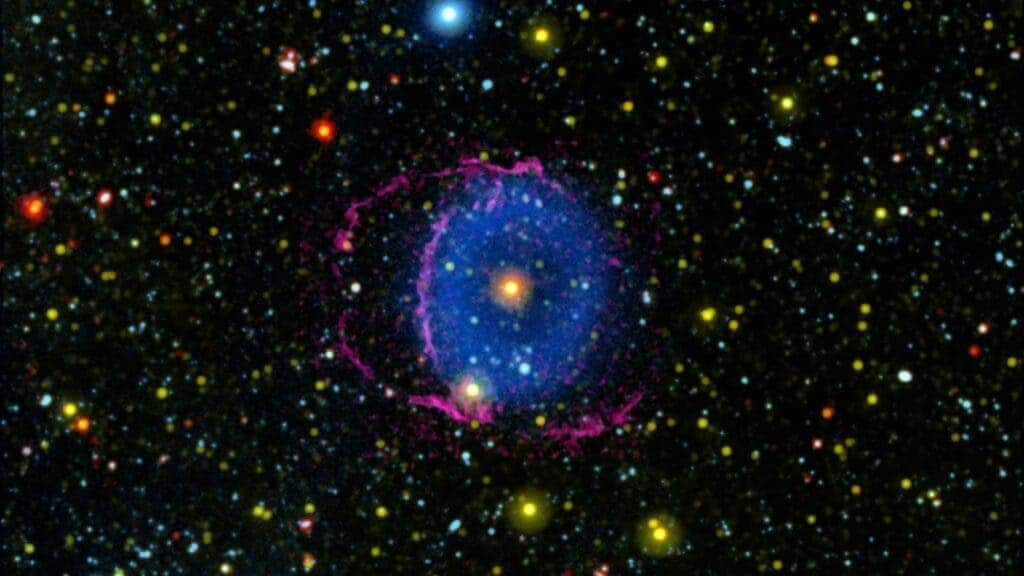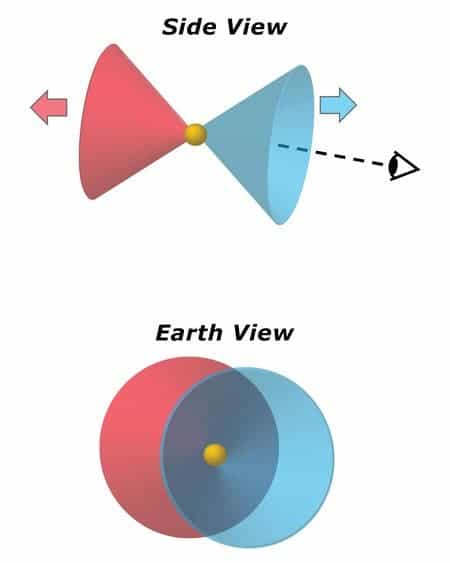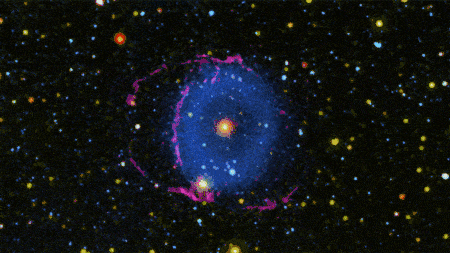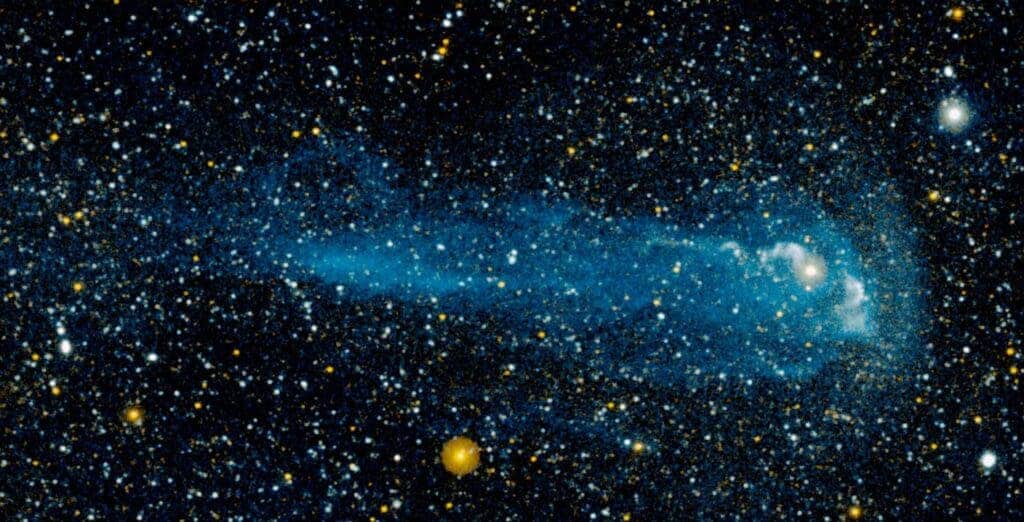The nebula, which looks like a spectral blue eye when observed in ultraviolet light, was first discovered in 2004. Now, researchers believe they finally understand how it was formed.

When stars collide
The blue ring nebula surrounds the dully-named star TYC 2597-735-1 but while its name lacks excitement, its structure more than makes up for it.
Initially, it looked like a quirky little porblem that could be solved by a brief study and some observations, but the more astronomers looked into it, the more the mystery deepened.
“Every time we thought we had this thing figured out, something would tell us, ‘No, that’s not right,'” Mark Seibert, an astrophysicist with the Carnegie Institution for Science, a member of the GALEX team and a co-author on the new research, said in a statement. “That’s a scary thing as a scientist. But I also love how unique this object is, and the effort that so many people put in to figure it out.”
Seiberg and colleagues used data from the now-defunct Galaxy Evolution Explorer (GALEX) space telescope that was used to discover the nebula, but they also combined it with data from the W. M. Keck Observatory, the Hobby-Eberly Telescope in Texas, and space-based telescopes like NASA’s retired Spitzer, to get a better picture of the entire structure.
The data was weird. For starters, the team found that it wasn’t a planetary nebula, which was their original hypothesis, because there was simply too much debris around. The only plausible alternative was a stellar collision. But a stellar collision also didn’t seem to fit, as the data showed an accretion disk around the star, which is commonly found around young stars — while TYC 2597-735-1 is pretty old.
That’s when astrophysicist Brian Metzger from Columbia University entered the stage. Metzger had been building mathematical and computational models of cosmic mergers. When he started sharing his data with the rest of the team, everything began falling into place.
“Like catching sight of a baby when it first walks”

The ring that surrounds the nebula is not actually a ring or even a sphere, Metzger’s models suggested. It’s actually the base of a cone, with the tip pointing at the bright dot in the middle. The nebula is facing Earth almost directly, which hides the rest of the cone from us.
Armed with the observational data and the theoretical models, the team concluded that the nebula is indeed a stellar collision, but an extremely new one.

Stellar mergers are fairly common, in cosmic terms. Astronomers predict that they occur in the globular clusters of our galaxy about once every 10,000 years, which may seem like a long time to us, but it’s the blink of an eye in astronomy. But they’re hard to see because they are quickly obscured by the dust and debris, says Keri Hoadley, the David and Ellen Lee Postdoctoral Scholar in Physics at Caltech in a statement. Astronomers caught it at just the exact moment, it seems.
“We think this object represents a late stage of these transient events, when the dust finally clears and we have a good view,” says Hadley, who is the lead study author, for Caltech. “But we also caught the process before it was too far along; after time, the nebula will dissolve into the interstellar medium, and we would not be able to tell anything happened at all.”
“It’s like catching sight of a baby when it first walks,” adds Don Neill, a research scientist at Caltech and a GALEX team member. “If you blink, you might miss it.”
The history of a mysterious nebula

Because it’s such a rare sighting, it can also be used as a blueprint for this type of process. Astronomers are much more likely to find this type of merger at different stages, and this data could help interpret other nebula observations.
But this particular nebula is interesting in its own right, and unraveling its story is well worth it.
Astronomers say the story of the Blue Ring Nebula began a few millennia ago, possibly after the first human civilizations had been established. It started with two stars: a larger one, about the mass of our sun, and a smaller one orbiting around it. The larger star grew closer and closer to the smaller one, which started siphoning off material from the larger one. But it couldn’t syphon enough and was ultimately devoured — which sent a cloud of debris flying all around. The cloud of debris was then sliced in half by the small star’s remaining disk of gas, producing the two cone clouds astronomers described in the new study.
It’s worth noting that the nebula isn’t technically blue. It was photographed in ultraviolet light, so it’s not technically any color, it’s just that blue is commonly used to depict ultraviolet and this is what astronomers went with. The pink around the nebula also isn’t technically pink. The shockwave from the merger excited hydrogen molecules in the debris, which caused them to fluoresce, also in ultraviolet light. This process was also observed around a star called Mira, also imaged by GALEX in 2007.
The study has been published in Nature.






